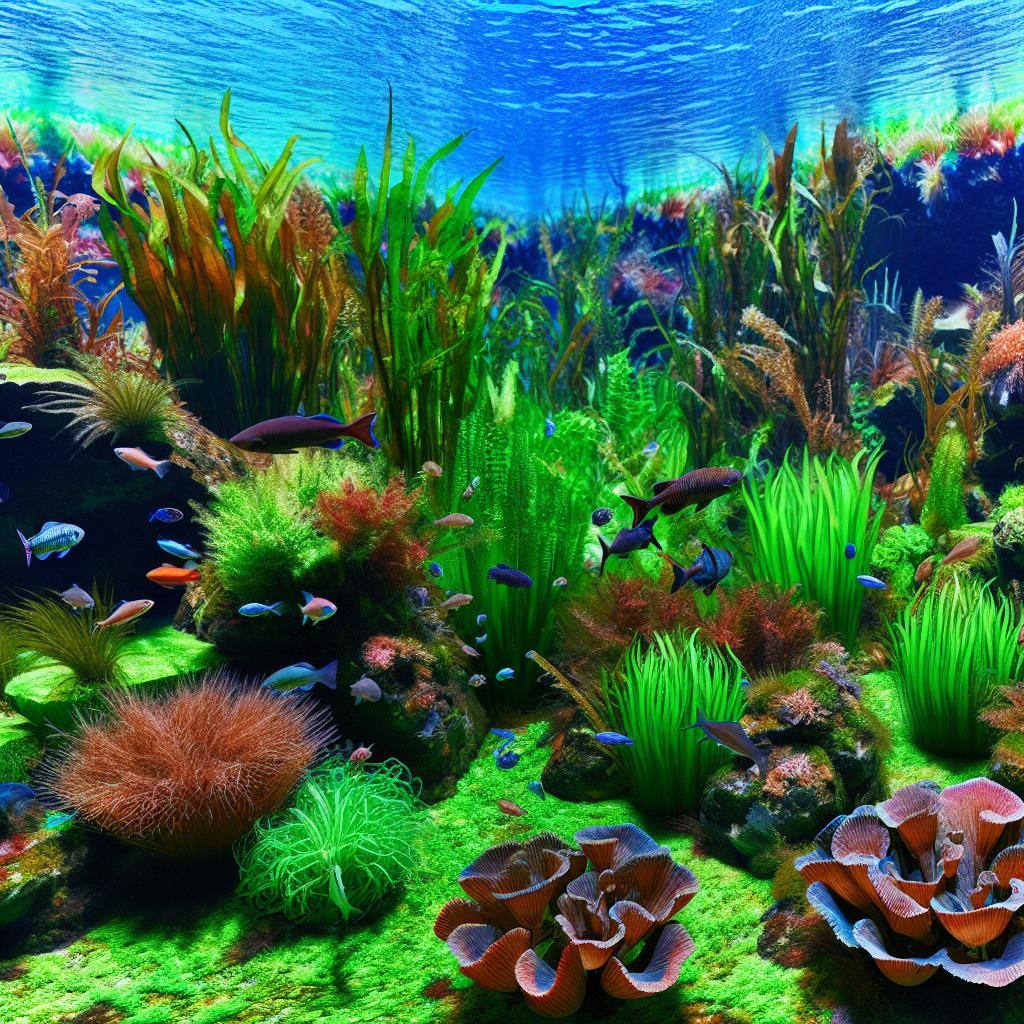
Unlock the secrets to a vibrant and thriving underwater garden with our expert advice on maintaining healthy live aquatic plants.
Selecting the Right Plants for Your Aquarium Environment
Choosing the right aquatic plants for your aquarium is crucial for ensuring their long-term health and growth. Consider factors such as lighting, water parameters, and the size of your aquarium when selecting plants. Hardy species like Anubias and Java Fern are excellent for beginners, while more advanced hobbyists may opt for demanding species that require specific conditions to flourish.
Research the natural habitat of the plants you're interested in and try to replicate those conditions. Some plants thrive in soft, acidic water, while others prefer hard, alkaline environments. Paying attention to these details will set the stage for a lush, healthy aquatic garden.
Lighting: The Keystone of Aquatic Plant Health
Proper lighting is essential for photosynthesis, the process by which aquatic plants produce energy. Different plant species require varying light levels, which can be categorized as low, medium, or high. LED lights with full-spectrum capabilities are a popular choice among aquarists, as they provide the necessary wavelengths for plant growth while being energy efficient.
Consider using a timer to regulate your lighting schedule, mimicking the natural day-night cycle. This not only benefits plant health but also helps control algae growth. Aim for about 8-10 hours of light per day, adjusting as needed based on plant response and algae development.
Nutrient Management: Fertilizers and CO2 Systems
Aquatic plants require a balance of macronutrients and micronutrients to thrive. Macronutrients include nitrogen, phosphorus, and potassium, while micronutrients consist of elements like iron and manganese. Liquid fertilizers and root tabs can supplement these nutrients, especially in tanks where fish waste alone is not sufficient.
Carbon dioxide (CO2) is another critical component of plant growth. CO2 injection systems can vastly improve the health and growth rate of your plants. However, they must be used cautiously, as too much CO2 can harm your fish. Ensure you have a proper diffusion method and consider using a CO2 drop checker to monitor levels.
Routine Maintenance: Pruning and Cleaning for Plant Vitality
Regular maintenance is key to keeping your aquatic plants healthy. Pruning helps promote new growth, prevents overcrowding, and removes dead or dying leaves which can decay and negatively impact water quality. Use sharp, sterilized scissors for clean cuts and minimize stress to the plants.
Cleaning is also essential for plant vitality. Remove debris and algae from leaves, as these can block light and inhibit photosynthesis. Gently brush or wipe the leaves with an aquarium-safe sponge during water changes. Keeping the substrate clean with a gravel vacuum helps prevent the accumulation of waste, which can lead to nutrient imbalances and algae issues.
Combating Algae: Keeping Your Plants and Aquarium Clean
Algae can compete with aquatic plants for nutrients and light, often becoming a nuisance in well-lit, nutrient-rich environments. To combat algae, maintain a balance of lighting, CO2, and nutrients. Avoid overfeeding your fish, as excess food can contribute to algae growth.
Introduce algae-eating fish or invertebrates that are compatible with your plants and fish community. These can include species like Siamese algae eaters, amano shrimp, or nerite snails. Regularly clean your aquarium by scraping algae off the glass and hardscape, and perform consistent water changes to remove excess nutrients from the water.



.jpg?width=352&name=Hygrophila+difformis%20Water%20Wisteria%20(1).jpg)
Leave a Comment